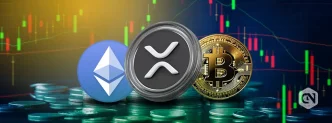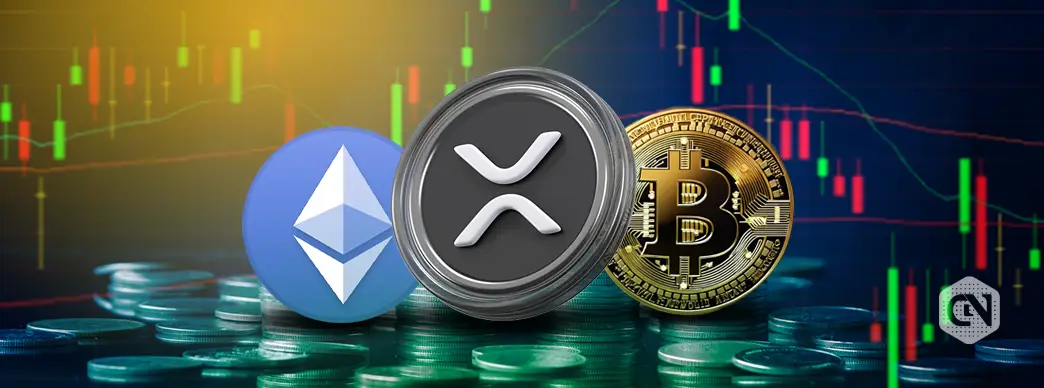In the decentralized world of cryptocurrency, comparing various types of tokens is becoming the main focus for investors and fans. After analyzing various cryptocurrencies, it is possible to pay attention to XRP by Ripple Labs, which targets the provision of cross-border payment and financial services. This blog will explore XRP, its purpose and technology compared to Bitcoin, Ethereum, and stablecoins, and its position in the market.
Understanding XRP: What Sets It Apart
XRP was initially created to serve as a means for making international payments quicker and cheaper. While most cryptocurrencies are just digital currencies used in similar ways as traditional fiat money, XRP is utilized by Ripple to provide a bridge currency that would connect various fiat currencies for a transfer. Its consensus algorithm makes transaction settlements fast, taking as little as a few seconds; it can process up to 1,500 TPS, which is faster than most of its competitors.
XRP vs. Bitcoin: A Comparison of Objectives and Technology
The first digital currency, Bitcoin, was launched in 2009. It was designed as virtual money used for purchases with a third party involved in the process. One of its primary functions is to act as a store of value and a medium of exchange. On the other hand, XRP was designed to overcome the shortcomings of the current banking system and, most of all, for international payments.
Technologically, Bitcoin utilizes the potential of work, a safety algorithm that is applicable and exhaustive but can handle approximately 7 TPS. In contrast to Bitcoin, XRP relies on the consensus protocol, which does not include mining. This contributes to faster transaction times and less energy consumption, making XRP more efficient in terms of the turnover of many transactions in a short period.
XRP vs. Ethereum: Contrasting Utility and Ecosystems
Ethereum is an open-source distributed computing platform that allows the creation and execution of smart contracts and decentralized applications. Its native token, Ether (ETH), is instrumental in various network activities. Ethereum has become the go-to platform for building various solutions, such as applications within DeFi and NFT.
The primary use case of XRP is to enable the frictionless transacting of international payments and to provide immediate settlement for banks and other financial institutions. Although Ethereum can process roughly 15 TPS, XRP is more desirable for payment settlements because it has a higher throughput and lower fees. However, Ethereum’s decentralized application and smart contract environment offer more features than XRP’s.
XRP vs. Stablecoins: Competing for Cross-Border Payment Solutions
Cryptocurrencies like Tether, USDT, and USD Coin are stable coins; they maintain their value by being linked to fiat currencies. They are popularly used in trading and as a settlement mechanism in the world of cryptocurrencies. Stablecoins offer a stable value, which helps to eliminate the risk related to volatility in cross-border payment systems.
XRP takes a very short time to process, and the transaction fees are cheap, making it a worthy competitor in the remittance business. However, unlike stable coins, whose value does not change, its value can fluctuate as the market rate is adjusted.
To address the problem, Ripple has announced plans to issue a new stablecoin, RLUSD, backed by the US dollar. This effort combines the sophistication of XRP with the solidity of fiat currencies.
XRP Prediction: How Competition Affects Its Market Position
XRP’s market position is enjoying a favorable competitiveness level compared to its rivals. It has challenges in store value with Bitcoin and dApp with Ethereum. For its part, stablecoins’ stability appeals to users who want to avoid high fluctuations.
However, XRP has an edge because it is building partnerships with banks and financial institutions and is targeting to address actual payment challenges. According to the XRP Prediction, the cryptocurrency could be valued between $4.50 and $5.60 by 2030, considering its market acceptance and legal status.
XRP’s Competitive Edge and Challenges
Potential benefits of XRP include high throughput, scalability, and low costs, which can be valuable for financial institutions. Banks and payment providers partnering with Ripple increase the value and adoption of the XRP token. However, XRP has some drawbacks, like regulatory concerns, primarily from the SEC in the United States, which have affected its perception and usage.
Future Outlook: Will XRP Continue to Hold Its Ground?
It can be concluded that depending on the further regulation and development of new applications, XRP still has the potential for future growth. Stablecoin integration could further complement its position in the DeFi segment, especially after the planned stablecoin launch.
Analysts have noted that if Ripple can clear its legal problems and stay on the cutting edge, XRP can possibly maintain its competitiveness, given the crypto market dynamics. Price predictions depict growth, with some analysts suggesting that XRP may rise to $7.80 by 2034.
Thus, XRP stands out from Bitcoin, Ethereum, and stablecoins because of its specific objective of enhancing international transactions. Despite the competition and regulatory challenges, it enjoys technological competitiveness and strategic planning, making it a key player in the cryptocurrency market.

